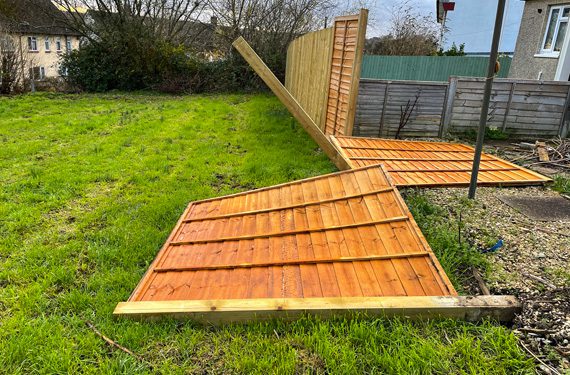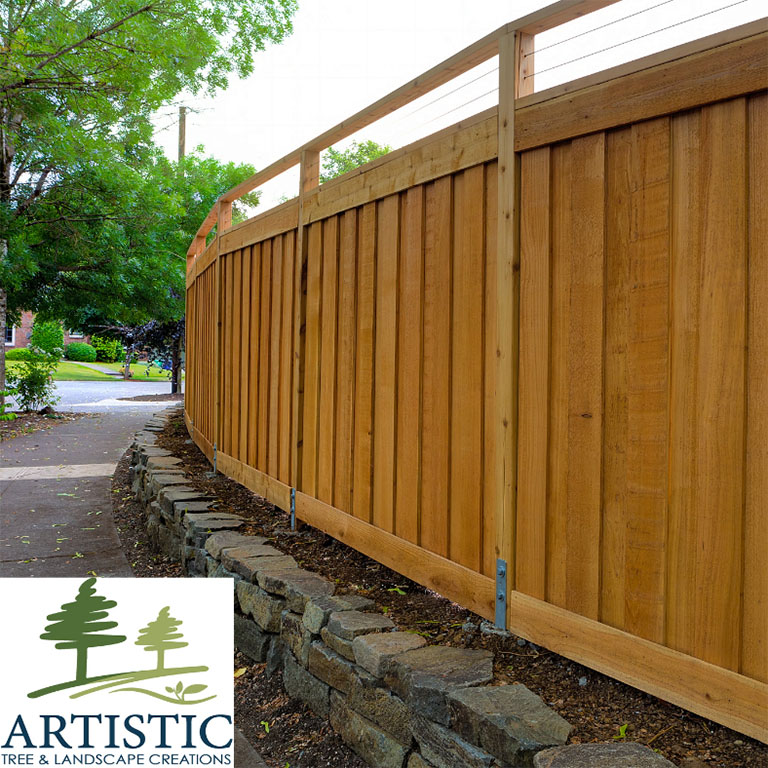All Categories
Featured
An appropriately selected fencing can act as a powerful deterrent versus trespassers and improve the general protection of your home or organization. Choosing the right elevation includes numerous elements, consisting of regional regulations, your details protection requirements, and the kind of fencing you are considering.
![]()
Sometimes, homeowners may require an authorization to construct a fence above a specific height. To avoid legal problems or fines, always get in touch with your neighborhood authorities prior to continuing with installment. Additionally, if you reside in a neighborhood governed by a property owners' organization (HOA), be sure to assess their guidelines, as they might have specific rules about fencing height and layout.
In more risky areas, or if you have valuable residential property or are taking care of safety issues, you may intend to think about an also taller fence-- approximately 8 feet or greater. A taller fencing is a lot more intimidating to potential burglars and offers a far better physical barrier. If you intend to go even additionally, consider adding safety functions like razor cord, electric secure fencing, or sharp latticework tops, which can make the fencing a lot more challenging to violation.
Wooden Fencings: Wood fences supply privacy, yet they can be reasonably easy to climb up. A height of 6 to 8 feet is advised for ample safety and security. To raise prevention, think about adding sharp tops or mounting a trellis with climbing plants. Wrought Iron Fences: Wrought iron fencings are sturdy and tough to climb up. They're commonly used for higher-security purposes and can be built between 6 to 8 feet high. The upright bars, particularly when covered with spikes or factors, work as a formidable barrier. Chain-Link Fences: A chain-link fence that's 6 to 8 feet high can give a useful and economical remedy. Adding attributes like barbed cable or razor cord at the top can increase safety significantly. Vinyl Fences: Vinyl fences can likewise offer privacy and safety and security, yet like wood fencings, they might require extra elevation and features to stop climbing. A solid plastic fencing of 6 to 8 feet in height can be extremely reliable at maintaining undesirable visitors out. 4. Privacy vs. Protection. If your key problem is privacy, a taller, solid fencing (like wood or vinyl) might be the most effective choice. Taller fences obstruct the sight from the outside, making sure that burglars can not quickly examine your home or area prized possessions. Privacy fences of 6 to 8 feet are regular for this objective.
Nevertheless, if safety is even more of an issue than privacy, you could desire to choose a fencing product that gives exposure, such as chain-link, while still being tall adequate to deter climbing up. The advantage of this method is that it enables you to maintain an eye on task outside your property and make it harder for somebody to technique undetected.
![]()
Anti-Climb Features: Mounting anti-climb spikes or trellis extensions on top of your fencing will make it also extra challenging for burglars to scale it. These can be specifically reliable on wooden or vinyl fencings. Razor Wire or Barbed Cord: If security is a substantial concern, including razor cable or barbed cord to the top of your fence is a highly effective deterrent. These attributes can be combined with a strong wooden or chain-link fence for optimum defense. Electric Secure fencing: For increased protection, electrical secure fencing can be mounted in addition to an existing fencing. While these call for unique setup and a professional to make sure safety, they can be really effective in avoiding unauthorized accessibility to your property. 6. Visual Factors to consider. While safety and security is the primary objective, it's also essential to consider exactly how the fence will certainly look. Some communities or areas may have visual standards or HOA guidelines, so choosing a fencing that matches your residential property's style while still providing security is essential. Deciding for a fencing that blends into the environment and fits the architectural design of your home can make certain that your fencing is both useful and visually enticing.
Verdict. When picking a fence elevation for ideal safety and security, purpose for an equilibrium in between height, product, and extra protection attributes to best meet your needs. A height of 6 to 8 feet is normally adequate for a lot of property homes, however if you live in a risky location or have certain protection problems, taller fences with included attributes like spikes or electric systems might be required.
- Understand Neighborhood Regulations and Regulations. Prior to you invest in a brand-new fencing, it's necessary to be conscious of the local zoning regulations and building regulations that may dictate the optimum elevation for fence your area. Many districts have restrictions on the height of fences, especially for front lawns, where fencings are often limited to 3 to 4 feet. In backyards, nonetheless, you may be permitted to develop taller fencings, generally varying from 6 to 8 feet.

Sometimes, homeowners may require an authorization to construct a fence above a specific height. To avoid legal problems or fines, always get in touch with your neighborhood authorities prior to continuing with installment. Additionally, if you reside in a neighborhood governed by a property owners' organization (HOA), be sure to assess their guidelines, as they might have specific rules about fencing height and layout.
- Think about the Degree of Safety You Required. The elevation of your fence directly associates with the degree of protection it offers. A fencing that's too short may be very easy to climb up over or bypass, making it inefficient in shutting out burglars. For greater security, go for a fence elevation of at the very least 6 feet, which is generally sufficient to prevent most people from conveniently scaling it.
In more risky areas, or if you have valuable residential property or are taking care of safety issues, you may intend to think about an also taller fence-- approximately 8 feet or greater. A taller fencing is a lot more intimidating to potential burglars and offers a far better physical barrier. If you intend to go even additionally, consider adding safety functions like razor cord, electric secure fencing, or sharp latticework tops, which can make the fencing a lot more challenging to violation.
- Pick the Right Fencing Material. Various fencing products provide varying degrees of safety and security, and the height of the fencing ought to be matched with the material's resilience. As an example:
Wooden Fencings: Wood fences supply privacy, yet they can be reasonably easy to climb up. A height of 6 to 8 feet is advised for ample safety and security. To raise prevention, think about adding sharp tops or mounting a trellis with climbing plants. Wrought Iron Fences: Wrought iron fencings are sturdy and tough to climb up. They're commonly used for higher-security purposes and can be built between 6 to 8 feet high. The upright bars, particularly when covered with spikes or factors, work as a formidable barrier. Chain-Link Fences: A chain-link fence that's 6 to 8 feet high can give a useful and economical remedy. Adding attributes like barbed cable or razor cord at the top can increase safety significantly. Vinyl Fences: Vinyl fences can likewise offer privacy and safety and security, yet like wood fencings, they might require extra elevation and features to stop climbing. A solid plastic fencing of 6 to 8 feet in height can be extremely reliable at maintaining undesirable visitors out. 4. Privacy vs. Protection. If your key problem is privacy, a taller, solid fencing (like wood or vinyl) might be the most effective choice. Taller fences obstruct the sight from the outside, making sure that burglars can not quickly examine your home or area prized possessions. Privacy fences of 6 to 8 feet are regular for this objective.
Nevertheless, if safety is even more of an issue than privacy, you could desire to choose a fencing product that gives exposure, such as chain-link, while still being tall adequate to deter climbing up. The advantage of this method is that it enables you to maintain an eye on task outside your property and make it harder for somebody to technique undetected.
- Enhancing the Protection with Additional Features. The height of your fencing is just one aspect of your overall safety and security approach. Take into consideration integrating extra features to enhance its effectiveness:

Anti-Climb Features: Mounting anti-climb spikes or trellis extensions on top of your fencing will make it also extra challenging for burglars to scale it. These can be specifically reliable on wooden or vinyl fencings. Razor Wire or Barbed Cord: If security is a substantial concern, including razor cable or barbed cord to the top of your fence is a highly effective deterrent. These attributes can be combined with a strong wooden or chain-link fence for optimum defense. Electric Secure fencing: For increased protection, electrical secure fencing can be mounted in addition to an existing fencing. While these call for unique setup and a professional to make sure safety, they can be really effective in avoiding unauthorized accessibility to your property. 6. Visual Factors to consider. While safety and security is the primary objective, it's also essential to consider exactly how the fence will certainly look. Some communities or areas may have visual standards or HOA guidelines, so choosing a fencing that matches your residential property's style while still providing security is essential. Deciding for a fencing that blends into the environment and fits the architectural design of your home can make certain that your fencing is both useful and visually enticing.
Verdict. When picking a fence elevation for ideal safety and security, purpose for an equilibrium in between height, product, and extra protection attributes to best meet your needs. A height of 6 to 8 feet is normally adequate for a lot of property homes, however if you live in a risky location or have certain protection problems, taller fences with included attributes like spikes or electric systems might be required.
Latest Posts
Add Convenience and Personality to Your Home with Area Rugs
Published Apr 21, 25
1 min read
Floor Covering Professionals That Treat You Like Household
Published Apr 21, 25
1 min read
Taking advantage of Your WyHy Bank Account
Published Apr 21, 25
1 min read